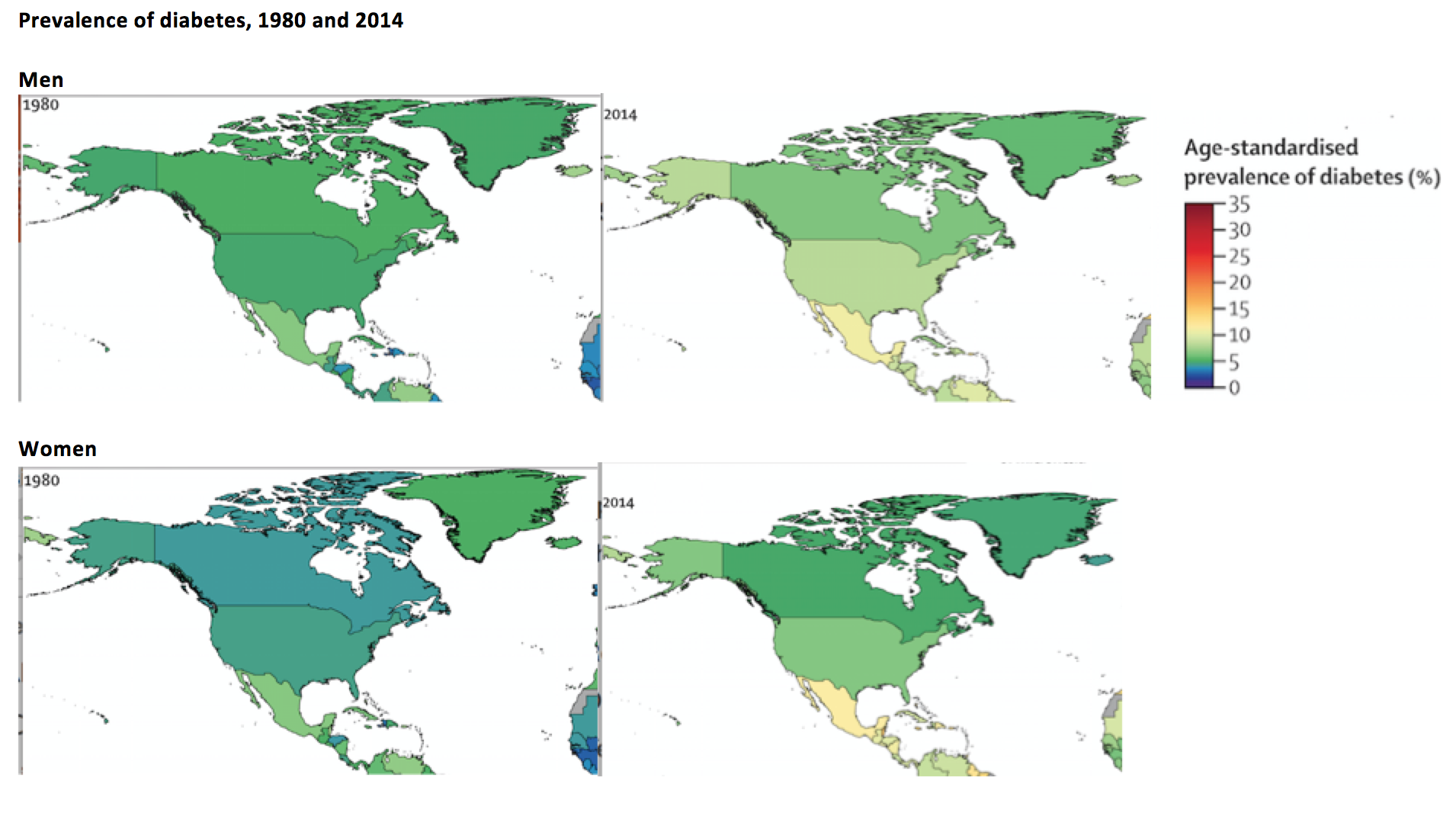
The number of adults with diabetes worldwide has quadrupled since 1980, increasing from 108 million to 422 million in 2014, according to a new study published in The Lancet.
In the United States, the age-adjusted prevalence of diabetes increased by 80% in men (from 4.7% to 8.2% of all men) during that time, and it increased by 50% in women (from 4.3% to 6.4% of all women). The age-adjusted prevalence rate accounts for diabetes becoming more common as a person ages and also for the fact that some countries have older populations.
“Diabetes has become a defining issue for global public health,” said senior author Majid Ezzati, Ph.D., from Imperial College London. “An aging population and rising levels of obesity mean that the number of people with diabetes has increased dramatically over the past 35 years.”
The study, published online ahead of World Health Day, which is April 7, found that diabetes became more common among men than women between 1980 and 2014. Global age-adjusted prevalence of diabetes doubled among men (from 4.3% to 9.0%) and increased by two-thirds among women (from 5.0% to 7.9%).
The study includes data from 751 studies totaling 4.4 million adults in different world regions. It estimates age-adjusted diabetes prevalence for 200 countries.
Northwestern Europe has the lowest rates of diabetes among women and men, the study found, with age-adjusted prevalence at 5% to 6% among men and lower than 4% among women in Switzerland, Austria, Denmark, Belgium and the Netherlands. Prevalence of diabetes was highest in Polynesia and Micronesia, where the age-adjusted prevalence is more than 20% in men and women.
The study did not differentiate between type 1 and type 2 diabetes, but most (85% to 95%) of cases of adult diabetes are type 2, according to the authors, so the observed increase is likely to be due to increases in type 2 diabetes.
“Obesity is the most important risk factor for type 2 diabetes, and our attempts to control rising rates of obesity have so far not proved successful,” Ezzati said. “Identifying people who are at high risk of diabetes should be a particular priority since the onset can be prevented or delayed through lifestyle changes, diet or medication.”
In a related commentary, Etienne Krug, M.D., M.P.H., director of the Department for Management of Noncommunicable Diseases, Disability, Violence and Injury Prevention at the World Health Organization, wrote: “The prevalence estimates provided by the NCD-Risk Factor Collaboration sound the alarm for large-scale, effective action to reduce the health and economic impact of diabetes. Improvements in prevention and management, together with better surveillance, should be prioritized in response to this call.”

Adapted from The Lancet. Full study online.



